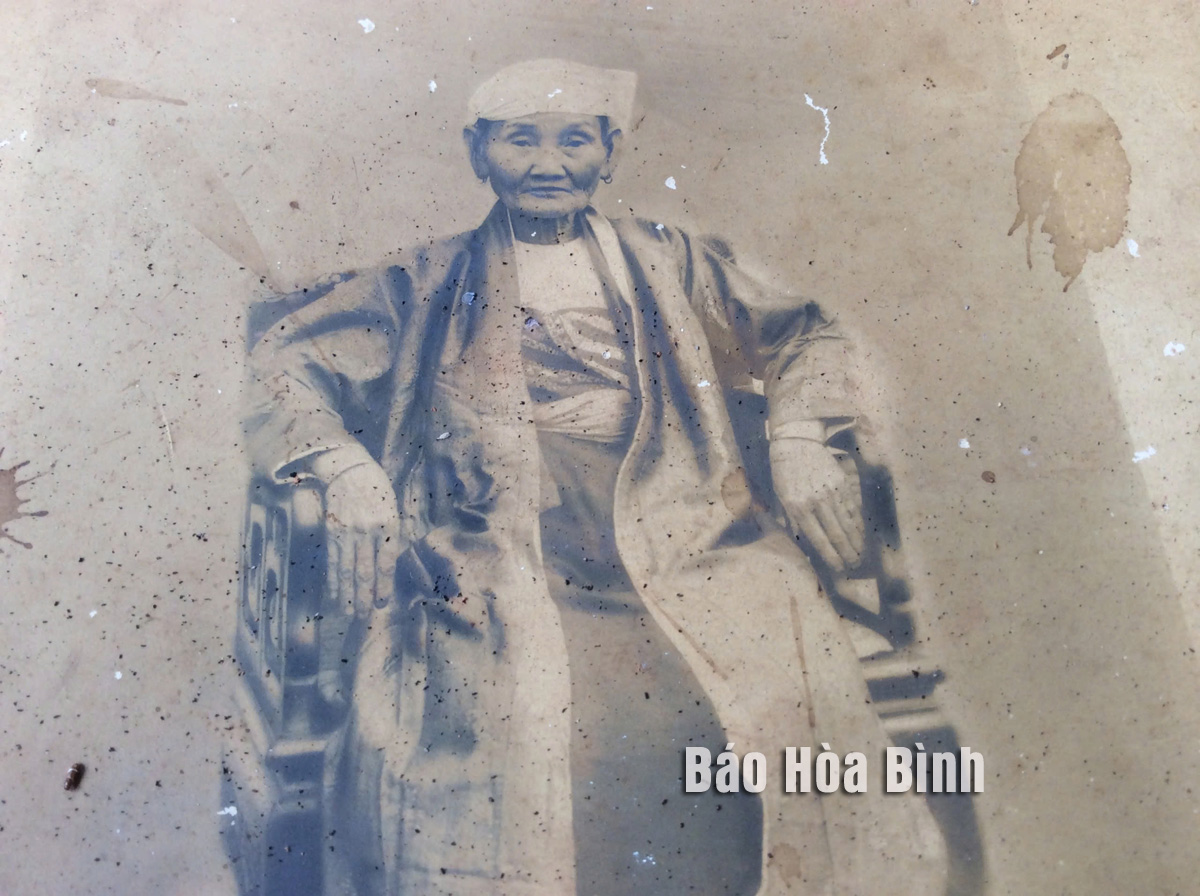



The headscarf of Muong women over 100 years ago. File Photo

The headscarf of Muong women today.
The clothing of married Muong women is distinct from that of the unmarried. The practice of wearing a headscarf when married is common and consistent among the Muong people, whether they live in Hoa Binh, Phu Tho, Thanh Hoa, or Son La. There are slight differences in the colour of the headscarf in regions where they live near the Thai people, such as Son La and Thanh Hoa, but it is still fundamentally the same headscarf.
When a Muong woman gets married, wearing a headscarf and tying her hair into a bun (called ‘bui to’) is mandatory. It is only in cases of mourning or divorce that a Muong woman is allowed to temporarily remove the headscarf. After the mourning period ends, she must put it back on. This unwritten rule was strictly followed in traditional Muong society. If, on ordinary days, a woman removes her headscarf without permission, it would be considered a violation of social ethics, showing disrespect to her husband and his family, or it could be seen as a sign of misfortune, as removing the headscarf typically signifies mourning, even if there is no death in the family.
The traditional headscarf worn by Muong women in the past was made of white cloth, rectangular in shape, about 60 cm in length and 20 cm in width, though the exact measurements could vary slightly. The headscarf covered the entire head and wrapped around the hair bun of the woman.
Today, the headscarf has evolved into a more modern design, taking on an isosceles trapezoid shape that forms a peak at the forehead. The scarf is no longer as large and wide as before and is often adorned with sparkling white sequins. The headscarf is now primarily worn for decorative purposes, rather than fully covering the hair as it was done in the past. Additionally, Muong women no longer wear hair buns; only the elderly still tie their hair in this way.
In Muong folk legend, there is a story about the origin of the ‘bit tlooc’. It tells of a girl named Ut Do, who deeply loved a poor young man. One day, while they were meeting by the stream, the young man told Ut Do that, according to the orders of the village leader, he had to venture into the forest to kill a vicious tiger that had been killing many people. He mentioned that he might not return, and before leaving, he gave her a piece of white cloth as a keepsake.
The young man went into the forest to fight the tiger, which was killed, but he also died and never returned. Heartbroken, and out of deep love and loyalty, Ut Do wore the cloth on her head for the rest of her life and vowed not to marry anyone else, remaining faithful to her husband. This is the origin of the ‘bit tlooc’. Moved by Ut Do's unwavering love, the Muong people established a tradition that any woman who is married must wear a headscarf on her head.